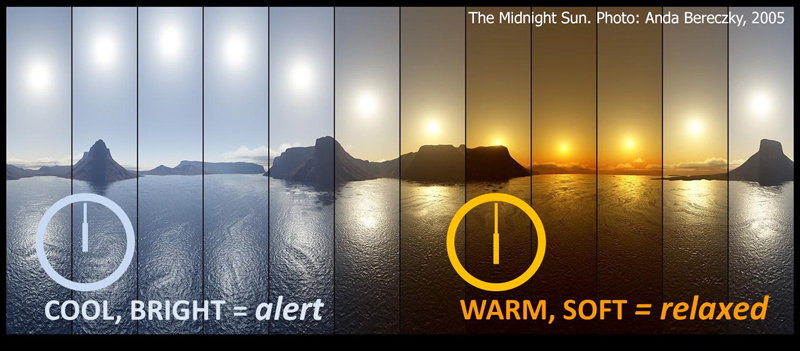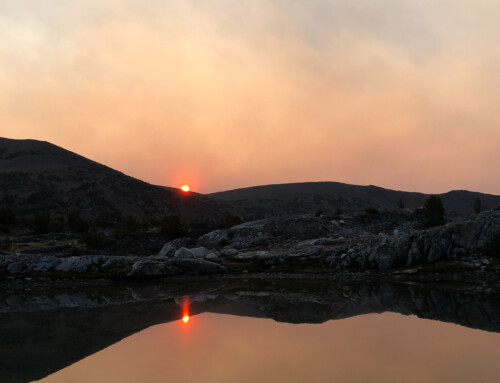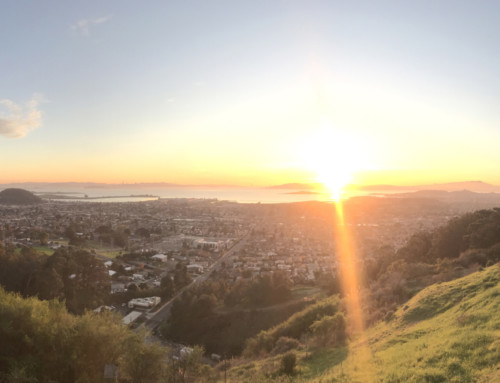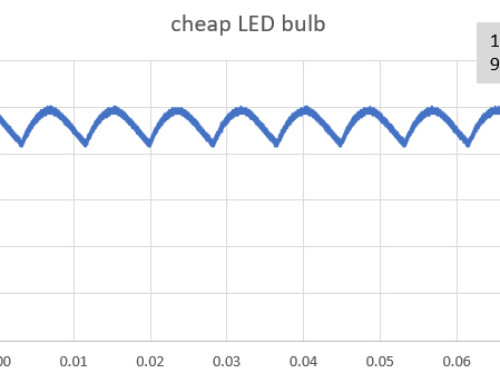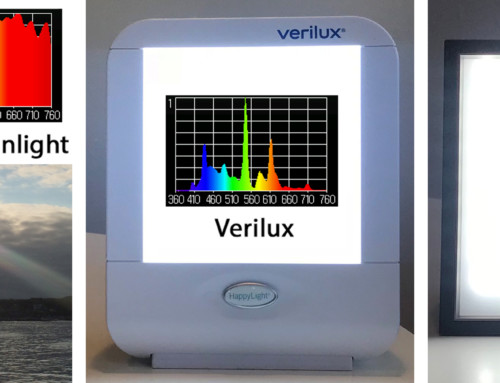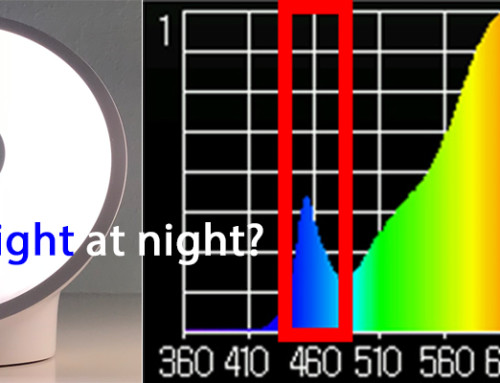Natural light is both full spectrum (contains all the colors of the rainbow) and dynamic (changes with the time of day as well as time of year and place on earth). The earth’s atmosphere filters the light from the Sun, which is why the light we see and feel changes with the time of day, and for different places on earth. During the day (when the sun is overhead) there is less filtering, so we receive brighter light with a higher blue and UV content. In the morning and evening sunlight travels through more of the earth’s atmosphere, which filters the blue and UV content, leaving the light softer and warmer (less intense, less blue, more yellow and red). Our bodies are programmed to respond to these daily changes in the intensity and color. We are naturally energized by a bright sunny day, and relaxed by the soft warm glow of sunset. Furthermore we see and feel our best when immersed in full spectrum light (more on that later).
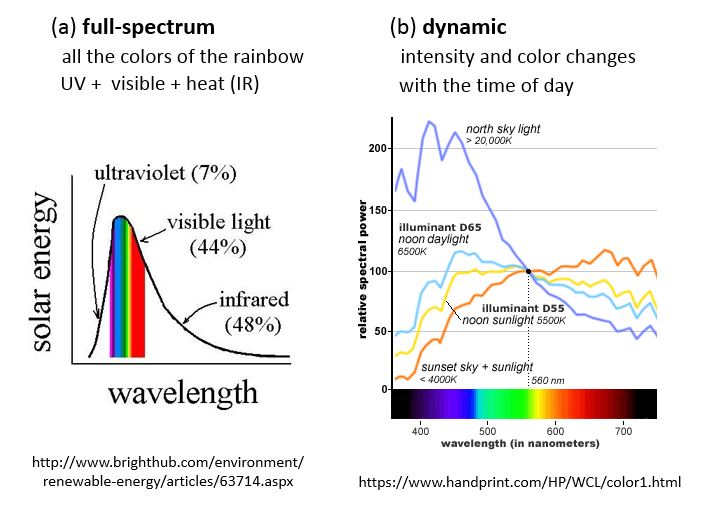
Figure (a) illustrates that ~44% of the Sun’s incident energy is in the ‘visible spectrum’ (where our eyes are sensitive), 7% is in ultra violet (damages skin and eyes but does help the body produce vitamin-D and naturally disinfects), and 48% is in the infrared which is heat (why the sun feels warm).
Figure (b) illustrates how the color (spectrum) of natural light changes with the time of day. During the day sunlight is more intense and contains more blue than red light. At sunset (and sunrise) sunlight is less intense and has more red light than blue light. Our bodies are programmed to respond to these daily changes in the color and intensity of light.
TIP#2: NOTICE how different the objects around you appear at Sunset versus at Noon – the daily changes in natural light have a profound effect on how we see the world around us (aesthetics) as well as on our biology!
additional reading / resources:
(a) Wikipedia has a good discussion of solar irradiance here
(b) for a detailed discussion of light and color vision/theory see handprint

